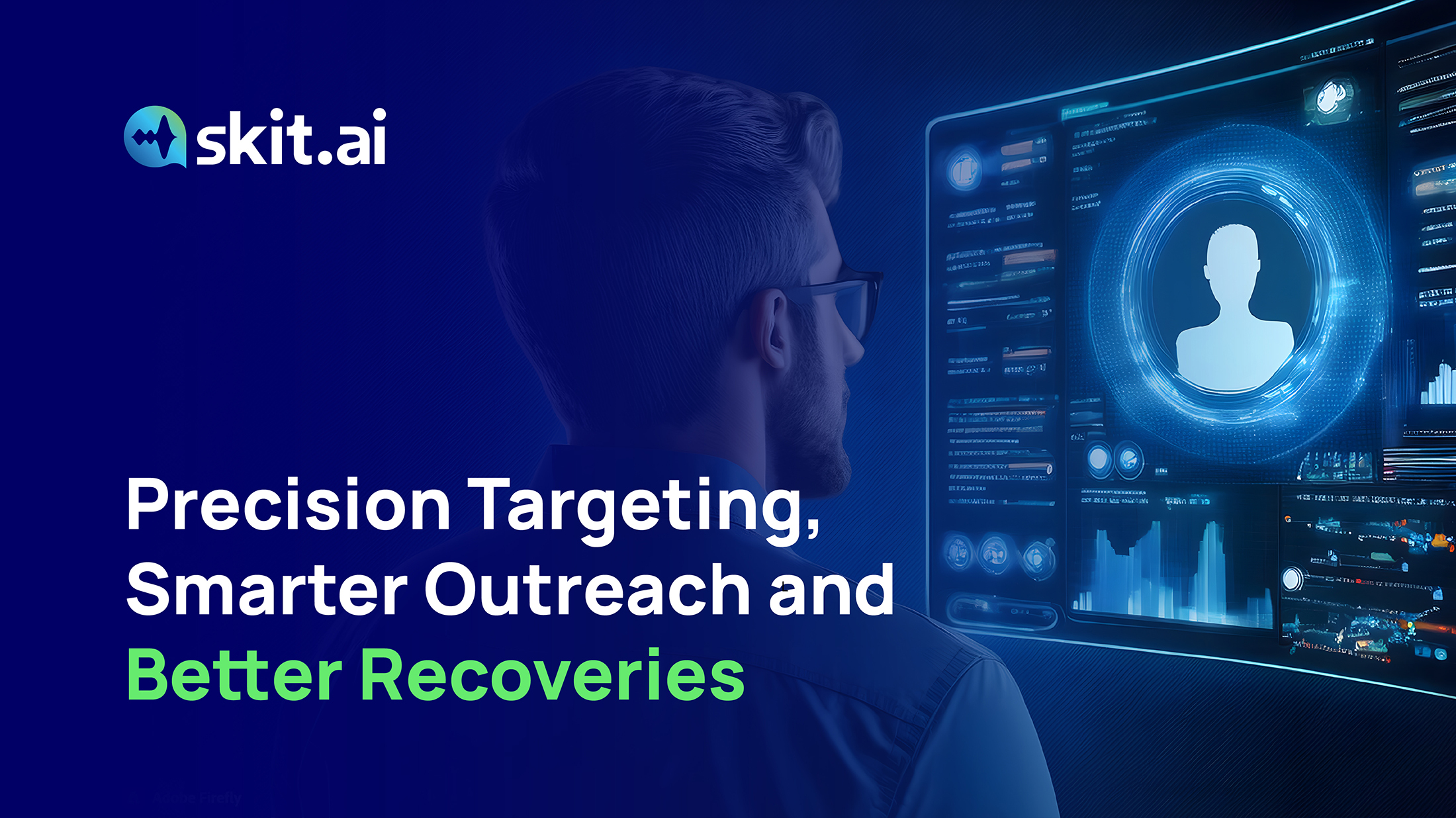How Does a Collection Orchestration Platform Streamline Collections?
Collection Orchestration Platforms, powered by Large Collection Models (LCMs), transform the debt recovery process by optimizing outreach strategies and streamlining workflows. Here’s how these platforms enhance efficiency and effectiveness in collections:
Identifying Underperforming Consumer Segments
The platform analyzes consumer data by leveraging an LCM-powered approach to identify segments with low engagement or response rates. This insight allows agencies to focus their efforts on accounts with higher recovery potential, ensuring resources are allocated for maximum impact. This method reduces inefficiencies and streamlines outreach, improving overall collection success.
Improving Consumer Engagement
Effective communication is crucial in collections. These platforms determine the best communication channels and timing for each consumer, tailoring outreach to their preferences and behaviors. Personalized engagement increases the likelihood of successful interactions while fostering trust and improving the consumer experience. Whether through SMS, email, or voice automation, the approach adapts to consumer needs.
Crafting Tailored Collection Strategies
LCM-powered platforms enable the creation of customized strategies for each campaign. For example, automation handles routine tasks like reminders, while human agents focus on high-value or complex cases. This balanced approach ensures every interaction is purposeful, driving better outcomes across all account types.
Optimizing ROI
With streamlined processes and targeted outreach, agencies can achieve better results using fewer resources. These platforms deliver strong returns on investment by focusing on the most effective methods and prioritizing high-impact accounts. Reduced time and effort translate into significant cost savings and higher profitability.
Accurate Revenue and Recovery Forecasting
Predictive analytics embedded in these platforms help agencies forecast revenue and recovery rates with precision. This capability aids in planning budgets, setting realistic goals, and minimizing financial risks. It also helps reduce charge-offs by identifying accounts with higher collection probability and prioritizing them accordingly.
Balancing Growth and Efficiency
Collection orchestration platforms contribute to revenue growth and cost reduction by improving recovery rates and optimizing operational processes. Automation of routine tasks, efficient resource allocation, and improved engagement strategies reduce operational expenses while enhancing the topline.
How Collection Intelligence Transforms Outcomes

An intelligent, data-driven approach to collections can significantly enhance efficiency, recovery rates, and customer satisfaction. Here’s a deeper look at how a collection agency can successfully leverage a Large Collection Model (LCM)-powered Collection Orchestration Platform to optimize its operations.
Step 1: Segmenting Delinquent Accounts
The first step is to analyze delinquent accounts by identifying patterns such as payment history, debt type, and engagement behavior. This data is used to segment customers into distinct groups:
- High-Potential Payers: Customers with a strong likelihood of making payments.
Low-Priority Accounts: Accounts with minimal impact on overall recovery metrics.
Non-Responsive Accounts: Consumers who were historically difficult to reach or engage. - This segmentation enables the agency to craft targeted strategies for each group, maximizing efficiency and minimizing wasted resources.
Step 2: Implementing Tailored Engagement Strategies
High-Potential Payers: For this group, agencies can prioritize direct, personalized interactions. Agents can be equipped with contextual data, such as payment history and previous interactions, to craft tailored scripts. The scripts can emphasize flexible payment options, such as installment plans or deadline extensions, which will resonate with the customers’ financial situations. This personalized approach increases the likelihood of resolution while maintaining a positive consumer experience
Low-Priority Accounts: The agency can utilize automated SMS reminders for accounts with lower recovery potential. These messages can be designed to be informative yet non-intrusive, keeping communication lines open without overburdening agents. This automation will allow the agency to reallocate human resources to higher-value accounts while maintaining engagement across the board.
Non-Responsive Accounts: For hard-to-reach customers, the agency can adopt a rotating touchpoint strategy. This would involve reaching out via multiple channels—email, SMS, and phone calls—at varied times to increase the chances of establishing contact. This diversified approach will cater to different consumer preferences and behaviors, gradually breaking through engagement barriers.
Step 3: Monitoring and Adjusting
Over six months, agencies can continuously monitor the performance of their strategies, using data from the Collection Orchestration Platform to make real-time adjustments. Insights such as optimal contact times, effective message formats, and successful engagement channels can be used to fine-tune the process further.
Potential Results Achievable with Intelligent Collections
- Higher Recovery Rates: Agencies can achieve significant improvement in successful collections by prioritizing high-potential payers through personalized outreach and applying efficient strategies across other customer segments.
- Enhanced Agent Productivity: Automation and intelligent segmentation allow agents to focus their time and effort on high-value accounts, boosting overall efficiency.
- Improved Customer Satisfaction: Tailored communication and respect for consumer preferences will lead to a better customer experience, which will be seen in higher satisfaction scores.
This is an elementary example of how LCM-powered platforms can transform debt recovery. With more data, the platform can develop increasingly precise and effective strategies for agencies. By aligning efforts with consumer behavior and leveraging data-driven insights, agencies can achieve better outcomes while fostering positive relationships with their customers.
Conclusion
The integration of Collection Orchestration Platforms powered by Large Collection Models (LCMs) is transforming the debt recovery landscape. By leveraging data-driven insights, these platforms enable agencies to identify underperforming segments, craft personalized engagement strategies, and optimize operational efficiency. Tailored approaches not only improve recovery rates but also enhance agent productivity and customer satisfaction.
As the collections industry evolves, embracing intelligent, adaptive solutions is no longer optional—it is essential for staying competitive and achieving sustainable growth. With the ability to forecast revenue, minimize costs, and create a more consumer-centric approach, Collection Orchestration Platforms are paving the way for a smarter, more effective future in debt recovery.













